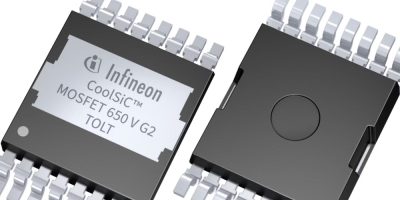Infineon is accelerating the development of humanoid robotics with NVIDIA technology. This integration combines Infineon’s expertise in microcontrollers, sensors, and smart actuators with the cutting-edge NVIDIA Jetson Thor Series modules, enabling original equipment manufacturers (OEMs) and original design manufacturers (ODMs) to create more efficient, powerful, and scalable motor control solutions for humanoid robotics. Humanoid robots are increasingly deployed in various important areas, including manufacturing, logistics, and healthcare, where they require efficient and reliable solutions for precise motion.
“We are excited to collaborate with NVIDIA, a leader and innovator in the humanoid robotics space,” said Jochen Hanebeck, CEO of Infineon Technologies. “By combining our microcontroller, sensor, and smart actuator expertise with NVIDIA accelerated computing technology, we will deliver a simple, integrated, and scalable solution to our customers, reducing their time to market significantly. Infineon enables the key functional blocks in humanoid robots with a broad portfolio of dedicated products and technologies – from power switches to microcontrollers, sensors and connectivity. We empower humanoid robots to sense, move, act and connect. Safe and secure.”
“NVIDIA Jetson Thor is designed to accelerate the future of physical AI and robotics”, said Deepu Talla, Vice President of Robotics and Edge AI at NVIDIA. “Infineon is bringing their broad product and technology portfolio to the Jetson Thor ecosystem to help accelerate customers’ time-to-market by creating more efficient, powerful and scalable motor control solutions for humanoid robots”.
Infineon offers a full suite of dedicated solutions for humanoid robots, including the microcontroller families PSOC and AURIX which offer industry-leading security to protect against cyberattacks and unauthorised access. The microcontrollers provide multi-core real time processing capabilities essential for safe, responsive, and adaptive robotic systems. With its latest acquisition of Marvell’s Automotive Ethernet business, Infineon has further extended its portfolio with the BRIGHTLANE series offering high-speed ethernet capabilities, another core element of humanoid robots.
Real-time AI and Control is critical to general robotics. As part of the collaboration, Infineon provides its PSOC Control C3 family of microcontrollers, which integrate seamlessly with the NVIDIA Holoscan Sensor Bridge to the NVIDIA Jetson Thor series modules – a platform for physical AI and humanoid robotics, delivering real-time reasoning performance and scalability. PSOC Control devices are well-suited for implementing so-called field-oriented-control (FOC) algorithms, which are widely used for precise motor control due to their ability to reduce noise and provide stable torque output which decreases vibrations in humanoid system designs. Additionally, Infineon provides a full motor control chip set including the company’s latest transistor technology based on gallium nitride (GaN) for high-density and best-efficiency motor control solutions. The integration of Infineon’s gate drivers and current sensors helps control communication and design challenges in humanoid robotics, allowing developers to focus on creating innovative solutions.







